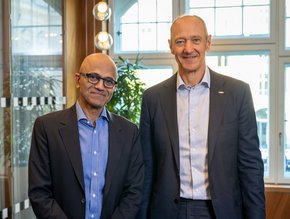McKinsey: Hybrid remote working will be legacy of COVID-19

Hybrid remote working could become the most influential legacy of the global COVID-19 pandemic, according to McKinsey & Company who predict the UK economy has the highest potential to lead this seismic shift.
An increase in remote working - mostly for a highly educated, well paid minority – is here to stay says the report but it is predicted to have a profound impact on urban economies, transportation and consumer spending.
“The virus has broken through cultural and technological barriers that prevented remote work in the past, setting in motion a structural shift in where work takes place, at least for some people,” comment McKinsey & Company.
Building on the McKinsey Global Institute’s work which looked at automation, Artificial Intelligence (AI) the report focuses on hybrid remote working - combining remote and office – with the impact on productivity.
“Our analysis finds that the potential for remote work is concentrated among highly skilled, highly educated workers in a handful of industries, occupations, and geographies,” says the report which predicts 20% of the workforce could work remotely three to five days a week as effectively as they could if working from an office.
UK highest potential for remote work
What’s next for remote work: An analysis of 2,000 tasks, 800 jobs, and nine countries, points out that labour forces in advanced economies will spend more time working remotely than those in emerging economies – with the UK leading the way.
The UK’s theoretical maximum was 46% compared to Germany (39%), US (39%) and Japan (39%) – India was the lowest at 16%.
“Business and financial services are a large share of the UK economy, for example, and it has the highest potential for remote work among the countries we examined. Its workforce could theoretically work remotely one-third of the time without a loss of productivity, or almost half the time but with diminished productivity,” comment McKinsey & Company.
The research found that remote work potential with no productivity loss is concentrated in a few sectors:
- Finance (76%)
- Management (68%)
- Professional and scientific services (62%)
Hybrid remote working model
The ability to work remotely depends on the need to use specialised equipment or machinery. According to the report, a chemical technician could work remotely only a quarter of the time because their equipment is in the laboratory.
The mixed pattern of remote and physical activities helps explain the results of a recent McKinsey survey of 800 corporate executives in which 38% of respondents expected their remote employees to work two or more days a week away from the office after the pandemic - compared to 22% before the pandemic.
“But just 19% of respondents to the recent survey said they expected employees to work three or more days remotely. This suggests that executives anticipate operating their businesses with a hybrid model of some sort, with employees working remotely and from an office during the workweek.
“JPMorgan already has a plan for its 60,950 employees to work from home one or two weeks a month or two days a week, depending on the line of business,” said McKinsey & Company but this will have a knock-on effect for the future of urban economies.
Impact on cities
A survey of 248 US chief operating officers found that one-third plan to reduce office space in the coming years as leases expire. “The impact of that will reverberate through the restaurants and bars, shops, and services businesses that cater to office workers and will put a dent in some state and local tax revenues,” says the report.
The potential for time spent on remote work drops in emerging economies. “Although India is known globally for its high-tech and financial services industries, the majority of its 464 million workforce is employed in occupations like retail services and agriculture that cannot be done remotely,” comment McKinsey & Company.
Remote – but only in a crisis
Although remote working looks set to take hold it will not apply to more than half the workforce. The report highlights that although some tasks can be done remotely in a crisis, they are more effectively done in person such as negotiating, teaching, collaborating and problem-solving.
The activities with the highest potential for remote work (with no productivity loss) and the theoretical maximum calculated in the report includes:
- Updating knowledge and learning – 82% (theoretical maximum 91%)
- Interacting with computers – 70% (theoretical maximum 75%)
- Communicating with colleagues or clients – 43% (theoretical maximum 63%)
- Training, teaching, coaching – 6% (theoretical maximum 47%)
- Selling to or influencing others 24% (theoretical maximum 41%)
Is remote work good for productivity?
With more than nine months of remote working, employers are experiencing better productivity from their remote workers, says the report.
“As employees have gained experience working remotely during the pandemic, their confidence in their productivity has grown, with the number of people saying they worked more productively increasing by 45% from April to May.”
It is anticipated a hybrid form of remote working is likely to persist long after COVID-19 is conquered. “This will require many shifts, such as investment in digital infrastructure, freeing up office space, and the structural transformation of cities, food services, commercial real estate, and retail, conclude McKinsey & Company.
For more information on business topics in Europe, Middle East and Africa please take a look at the latest edition of Business Chief EMEA.






